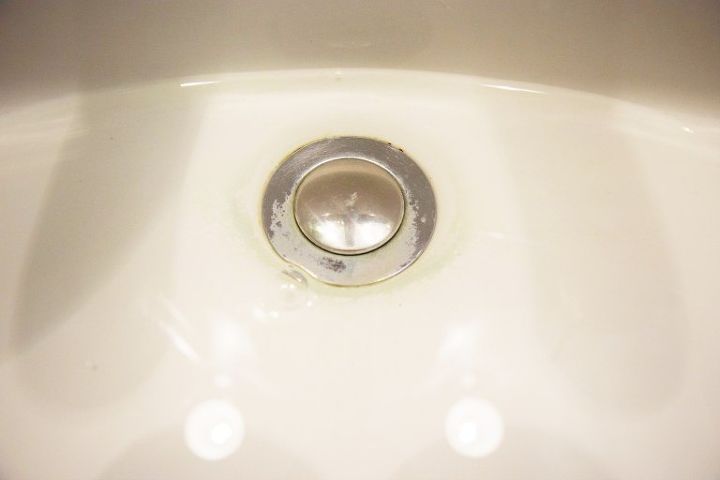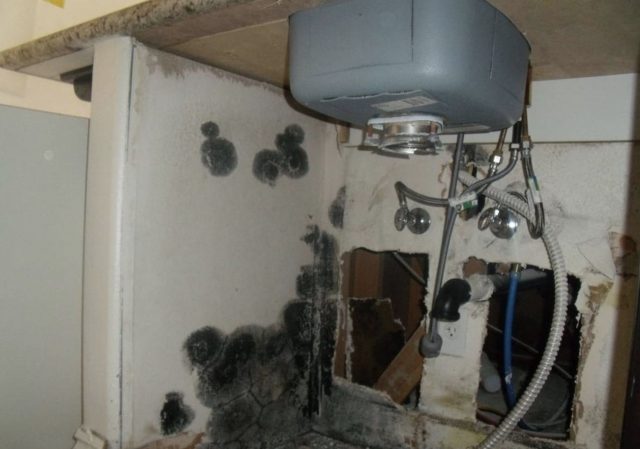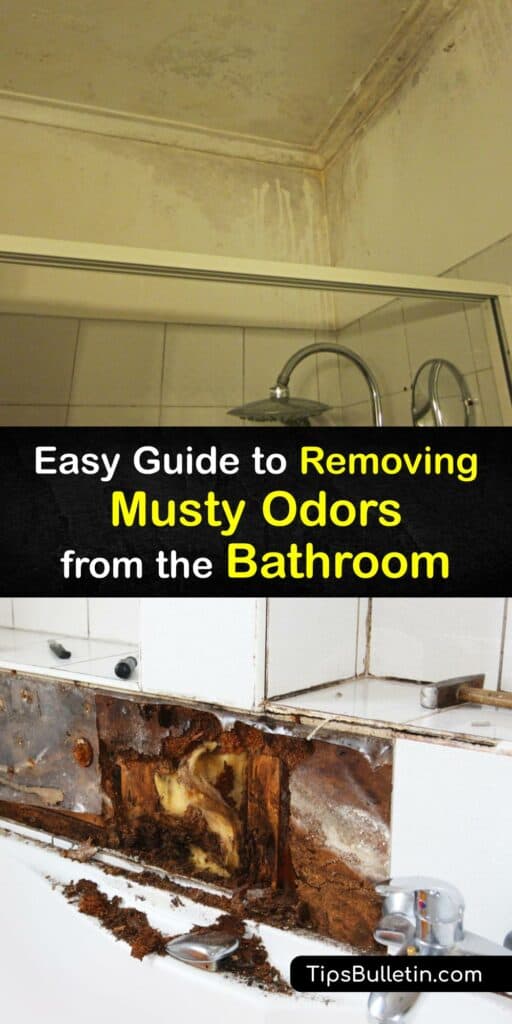If you've noticed water pooling under your bathroom sink, you may have a water damage issue. This can be caused by a number of factors, including leaky pipes, faulty plumbing, or even excess moisture in the air. Whatever the cause may be, it's important to address the problem as soon as possible to prevent further damage to your bathroom and potential health hazards.Water damage under bathroom sink
The first step in fixing water damage under your bathroom sink is to locate the source of the problem. Check for any visible leaks or cracks in the pipes, and if necessary, shut off the water supply to your sink. Next, you'll need to dry out the area under the sink and any surrounding surfaces. Use a towel or mop to soak up any standing water, and then use a fan or dehumidifier to remove excess moisture from the air.How to fix water damage under bathroom sink
One of the most common causes of water damage under bathroom sinks is leaking pipes. This can be caused by old or worn out pipes, loose connections, or even clogs. If you notice any leaks or dripping water, it's important to address the issue immediately to prevent further damage. You may need to replace the pipes or tighten connections to fix the leak.Leaking pipes under bathroom sink
If you're comfortable with DIY projects, you may be able to repair leaking pipes under your bathroom sink on your own. First, turn off the water supply to your sink and then use a wrench to tighten any loose connections. If the pipes are old or damaged, you may need to replace them entirely. If you're not confident in your plumbing skills, it's best to call a professional to handle the repairs.How to repair leaking pipes under bathroom sink
Water stains under your bathroom sink can be unsightly and difficult to remove. These stains can be caused by hard water, mold growth, or even cosmetic products. To remove water stains, mix equal parts white vinegar and water and apply it to the stained area. Let it sit for a few minutes before scrubbing with a sponge or cloth. For tougher stains, you may need to use a mild abrasive cleaner.Water stains under bathroom sink
Aside from using a vinegar and water solution, there are other natural methods for removing water stains under your bathroom sink. Baking soda can be used as a gentle abrasive cleaner, and lemon juice can also help to break down stains. For tougher stains, you may need to use a commercial cleaner specifically designed for removing water stains.How to remove water stains under bathroom sink
Mold is a common issue in damp and humid environments, making the bathroom a prime location for growth. If you notice mold under your bathroom sink, it's important to address the issue immediately. Not only can it cause damage to your sink and surrounding areas, but it can also pose a health risk. Mold can be removed with a mixture of water and bleach, but it's best to wear protective gear and ventilate the area while cleaning.Mold under bathroom sink
To get rid of mold under your bathroom sink, start by removing any items stored in the area. Then, mix equal parts water and bleach and apply it to the affected area using a scrub brush or sponge. Let the solution sit for a few minutes before rinsing it off with water. You may need to repeat this process a few times for tougher mold stains.How to get rid of mold under bathroom sink
A musty smell under your bathroom sink is a telltale sign of mold or mildew growth. This unpleasant odor can also be caused by excess moisture in the air, which can lead to the growth of bacteria. To eliminate the musty smell, you'll need to address the underlying cause and thoroughly clean and dry the area.Musty smell under bathroom sink
To eliminate a musty smell under your bathroom sink, start by cleaning the area with a mixture of water and bleach. Next, use a dehumidifier to remove excess moisture from the air and prevent future growth. You can also try placing a bowl of baking soda or activated charcoal under the sink to absorb any lingering odors. In conclusion, water damage under your bathroom sink can be a frustrating and potentially hazardous issue. By addressing the problem promptly and taking preventive measures, you can protect your bathroom and your health. Remember to regularly check for leaks and moisture to catch any potential issues before they become bigger problems.How to eliminate musty smell under bathroom sink
A Practical Guide to Fixing Water Under Your Bathroom Sink
/close-up-of-overflowing-bathroom-sink-90201417-579787783df78ceb865822d8.jpg)
Causes of Water Under Your Bathroom Sink
 If you have noticed water pooling under your bathroom sink, there could be several reasons for this issue. The most common cause is a leaking pipe, which can be caused by wear and tear, corrosion, or improper installation. Another possible cause is a clogged drain, which can lead to water backing up and overflowing under the sink. It could also be due to a faulty seal or loose connections between the sink and the countertop. Regardless of the cause, it is important to address the issue promptly to prevent further water damage in your bathroom.
If you have noticed water pooling under your bathroom sink, there could be several reasons for this issue. The most common cause is a leaking pipe, which can be caused by wear and tear, corrosion, or improper installation. Another possible cause is a clogged drain, which can lead to water backing up and overflowing under the sink. It could also be due to a faulty seal or loose connections between the sink and the countertop. Regardless of the cause, it is important to address the issue promptly to prevent further water damage in your bathroom.
Steps to Fix Water Under Your Bathroom Sink
 Step 1: Turn Off the Water Supply
Before you start any repairs, it is important to turn off the water supply to your bathroom. This can usually be done by turning the shut-off valve located under the sink in a clockwise direction. If you cannot locate the valve, you can also turn off the main water supply to your house.
Step 2: Identify the Source of the Leak
Once the water supply is turned off, you can start investigating the source of the leak. Check the pipes and connections under the sink for any visible signs of damage, such as cracks or holes. If you notice any, these will need to be repaired or replaced. If the pipes and connections appear to be intact, the issue may be with the drain.
Step 3: Unclog the Drain
If the water under your bathroom sink is caused by a clogged drain, you can try using a plunger or a drain snake to clear the blockage. If these methods do not work, you may need to seek professional help to ensure the drain is completely cleared.
Step 4: Tighten Loose Connections
If the leak is caused by loose connections between the sink and the countertop, use a wrench to tighten them. Be careful not to over-tighten as this can cause damage to the connections.
Step 5: Replace Faulty Seals
If the issue is a faulty seal, you will need to replace it. This can be done by removing the old seal and cleaning the area before applying a new sealant.
Step 6: Test for Leaks
Once you have completed the repairs, turn the water supply back on and check for any leaks. If there are no more leaks, you have successfully fixed the issue.
Step 1: Turn Off the Water Supply
Before you start any repairs, it is important to turn off the water supply to your bathroom. This can usually be done by turning the shut-off valve located under the sink in a clockwise direction. If you cannot locate the valve, you can also turn off the main water supply to your house.
Step 2: Identify the Source of the Leak
Once the water supply is turned off, you can start investigating the source of the leak. Check the pipes and connections under the sink for any visible signs of damage, such as cracks or holes. If you notice any, these will need to be repaired or replaced. If the pipes and connections appear to be intact, the issue may be with the drain.
Step 3: Unclog the Drain
If the water under your bathroom sink is caused by a clogged drain, you can try using a plunger or a drain snake to clear the blockage. If these methods do not work, you may need to seek professional help to ensure the drain is completely cleared.
Step 4: Tighten Loose Connections
If the leak is caused by loose connections between the sink and the countertop, use a wrench to tighten them. Be careful not to over-tighten as this can cause damage to the connections.
Step 5: Replace Faulty Seals
If the issue is a faulty seal, you will need to replace it. This can be done by removing the old seal and cleaning the area before applying a new sealant.
Step 6: Test for Leaks
Once you have completed the repairs, turn the water supply back on and check for any leaks. If there are no more leaks, you have successfully fixed the issue.
Preventing Future Water Under Your Bathroom Sink
 To prevent water from pooling under your bathroom sink in the future, it is important to regularly check for any signs of leaks or damage. You can also apply a waterproof sealant around the base of the sink to prevent water from seeping through. Regularly cleaning and maintaining your pipes and drains can also help prevent clogs and leaks.
In conclusion, water under your bathroom sink can be a frustrating issue, but it can be easily fixed with the right tools and techniques. By following these simple steps and taking preventive measures, you can ensure that your bathroom remains free of any water damage. If you are unsure or uncomfortable with fixing the issue yourself, do not hesitate to seek professional help. Keeping your bathroom in good condition not only ensures its functionality but also adds value to your home.
To prevent water from pooling under your bathroom sink in the future, it is important to regularly check for any signs of leaks or damage. You can also apply a waterproof sealant around the base of the sink to prevent water from seeping through. Regularly cleaning and maintaining your pipes and drains can also help prevent clogs and leaks.
In conclusion, water under your bathroom sink can be a frustrating issue, but it can be easily fixed with the right tools and techniques. By following these simple steps and taking preventive measures, you can ensure that your bathroom remains free of any water damage. If you are unsure or uncomfortable with fixing the issue yourself, do not hesitate to seek professional help. Keeping your bathroom in good condition not only ensures its functionality but also adds value to your home.

































































































